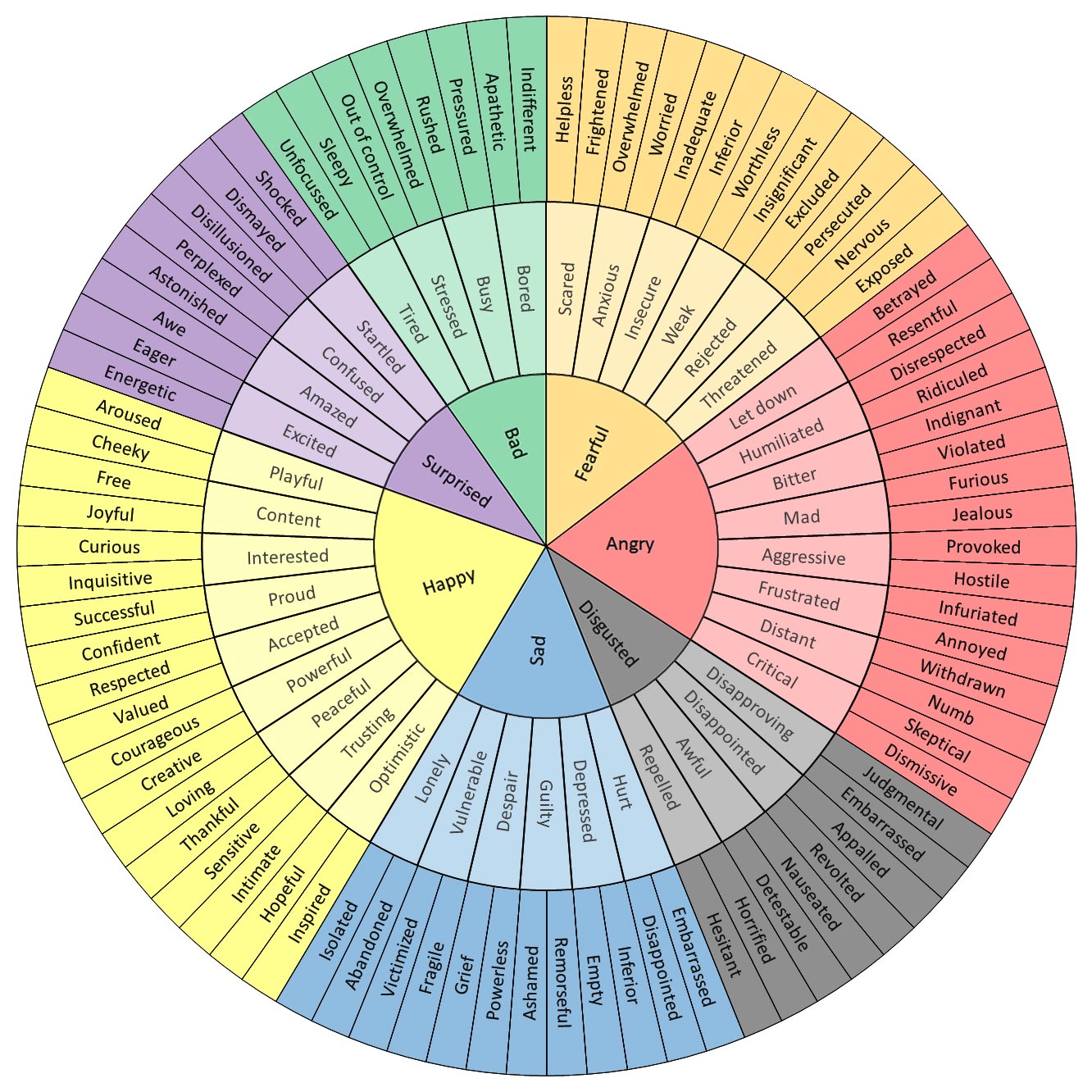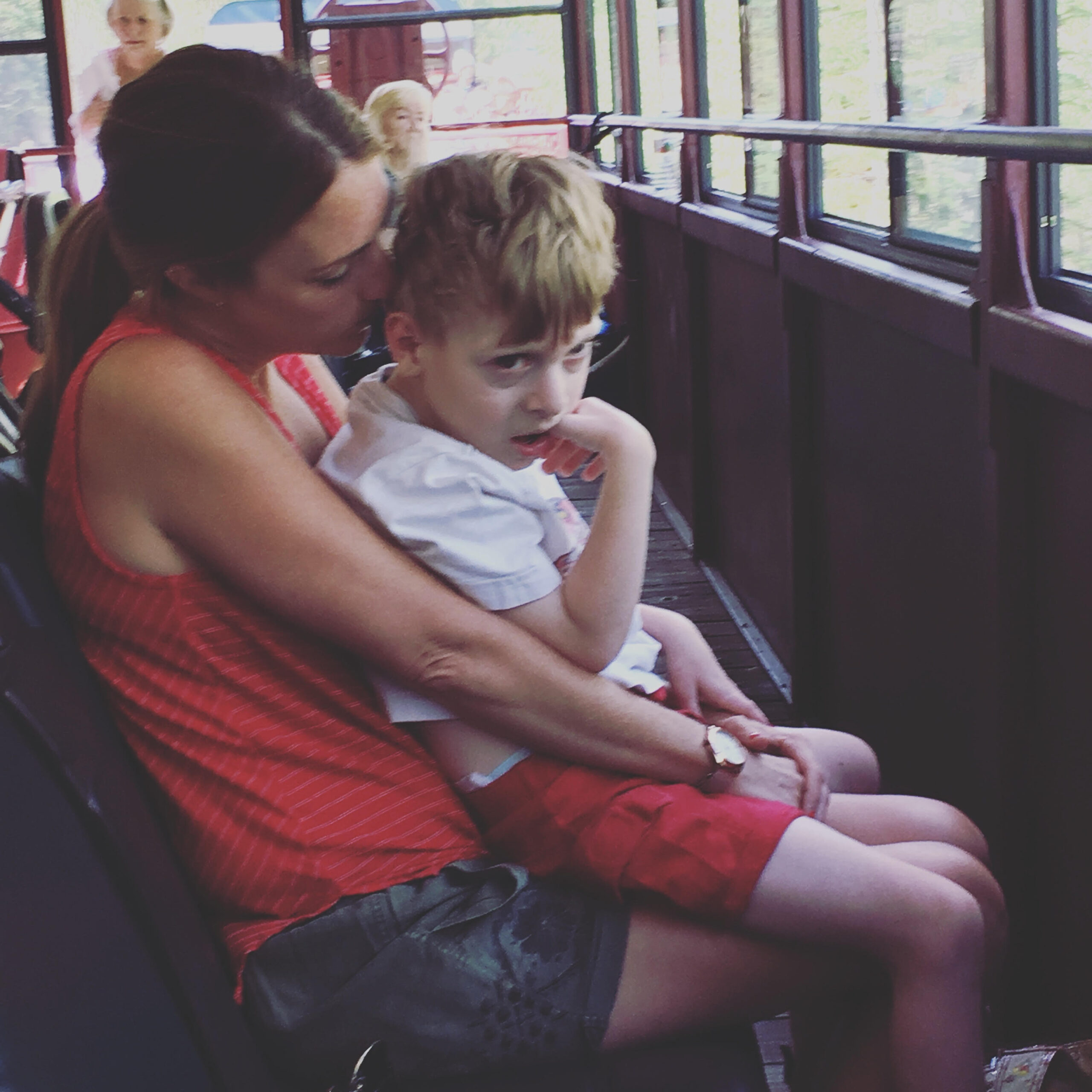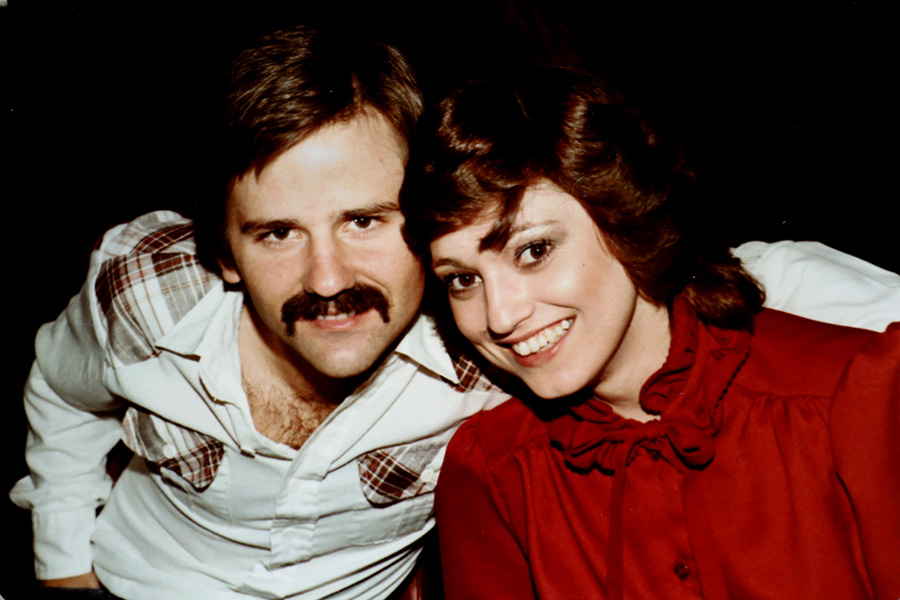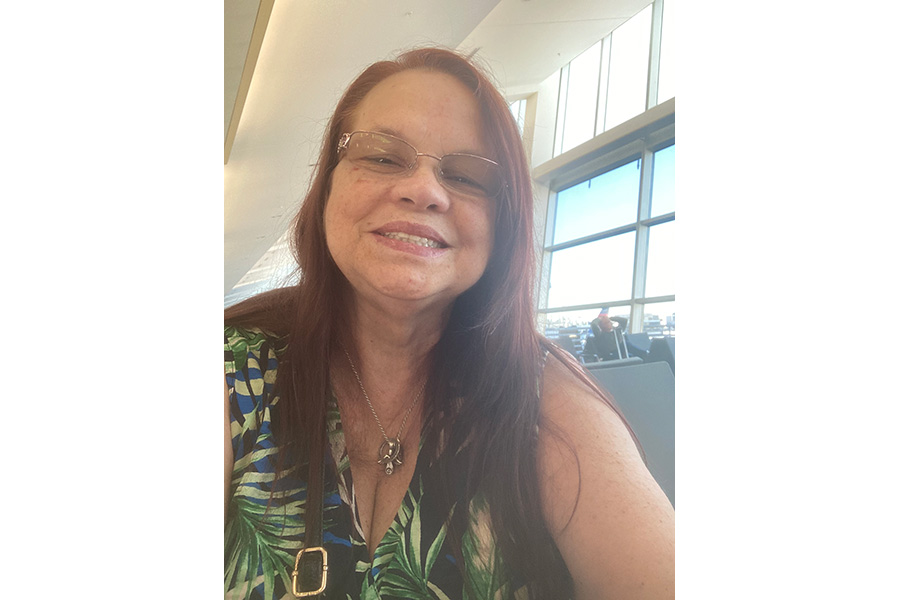I first encountered the Feelings Wheel in therapy. I had just told my therapist how shocking it was to see a discarded face mask on the sidewalk. How had we gotten to this point – where our safety precautions are so common they’ve been relegated to trash? Where something that would be a well-placed clue for ambiance in a post-apocalyptic film is now real life? I went on and on. The longer I talked the more animated I got – waving my arms to the point that it could have counted as a pretty decent workout. Then she asked me, “How did that make you feel?”
I froze. The clocked ticked. I dropped my arms and hugged the fuzzy mauve couch pillow. But I couldn’t name the feeling. Did the sight of that mask make me anxious? Angry? Sad? Resigned? I couldn’t put my finger on the word and it left me both breathless and speechless. If she had asked me how that felt, I wouldn’t have said “winded”.
This is when she pulled out the Feelings Wheel. It looked like something you’d click over to on cable television while visiting your grandma. It was the game show version of your deepest emotions –brightly colored and organized chaos. I loved it immediately.

The biggest general emotions sit in the innermost circle: Fearful, Angry, Disgusted, Sad, Happy, Surprised, Bad.
And then, as you pinpoint this big feel, you move out to more choices for each category such as “rejected” or “weak” under Fearful and “content” or “proud” under Happy. In this way, you keep moving farther and farther out until you reach the edge of the circle and hopefully, your truest emotion in that moment.
For me the sighting of that mask as trash made me feel Sad and then “vulnerable” and ultimately, “fragile” and “isolated.” By using the wheel, I realized that in this prolonged period of pandemic living, my heart is heavy with fatigue and the fragility that comes with existing on the edge for so long. I was a frayed bit of kite string, trying to hold on to all the pieces of my family and something about that mask, blowing in the wind, made me feel that all over again.
The Feelings Wheel now holds residence on our refrigerator. It has become both the bull’s eye and compass for how my family navigates our feelings. And for my son, who has cerebral palsy and is mostly nonverbal, this has been a saving grace.
If he comes home from school a little weepy but is too tired to use his speaking device to tell me why, we pull out the wheel, and I hold his hand and we hover over it like it’s a Ouiga board. And eventually, he points and tells me he is “frustrated” or “numb” and I give him a blanket and we read a book and eat Cheez-Its and take a minute or thirty to reset. That’s what the Feelings Wheel is for. By naming the emotion, it takes away the its power and allows you to reset.
This is why I love therapy. It helps you name the things that often feel too big to be named and this is why I love the Feelings Wheel. It allows you to pick a big word for your big feels and then narrow them down, like carving a piece of wood, until you get to the shape of things.

Jamie Sumner is a special needs mom, author and blogger.
Read her blog, The Mom Gene.
Follow her on Facebook.















